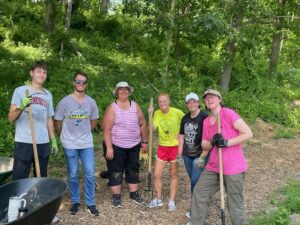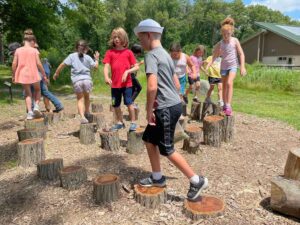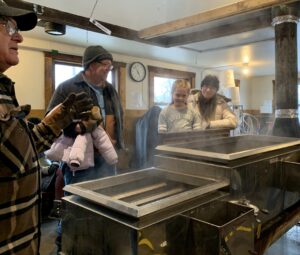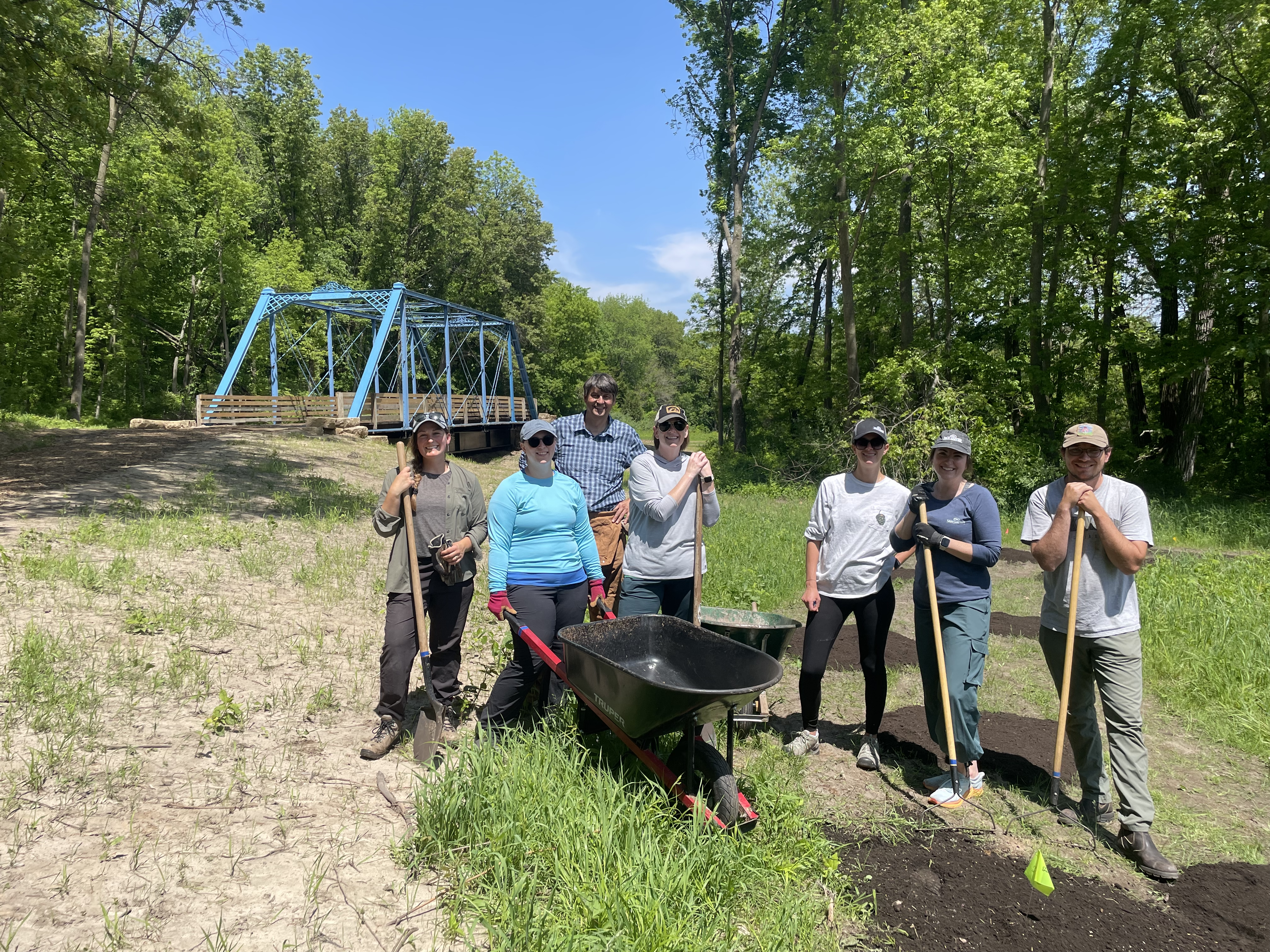By Jean Wiedenheft, Director of Land Stewardship
Volunteers and Restoration

A tremendous amount of the restoration work we do on the land is done by volunteer groups. Volunteering as a group is a great way to support camaraderie and team cohesion, learn about the ecology of the region, and support the community. Key areas we have tackled this year include removing invasive autumn olive shrubs; removing invasive black locust trees; planting tallgrass prairie; and planting native trees and shrubs. Volunteer groups have included: Aegon, CRST, Bradley and Riley, Global Ties Iowa, Kids on Course, Linn Mar/Venture Earth Science students, New Leader Manufacturing, PepsiCo, To the Rescue, Trees Forever Growing Futures, TrueNorth Companies, United Way, Van Meter and the Xavier High School Girls Soccer Team.
More than 351 individuals have come to Amazing Space to help, in the pouring rain of the spring and the blazing heat of the summer.
Getting to know the volunteers is incredibly rewarding. Some have been coming to the Nature Center and helping out longer than I have been involved with the organization. For others, it is the first time they have ever used a shovel or a handsaw. Everyone is in the same place at the same time to make a positive difference for the community and the environment.
Young People Making a Difference for Young People

Eagle Scout Service Projects provide unique opportunities for young people to learn and practice leadership skills, develop projects from start to finish, and work hands-on to see a project through to completion. Eagle Scout Kaiden Connell from Scout Troop 8 replaced the stepping stump spiral in Hazelnut Hideaway.
Kaiden selected this specific project because it would support young children developing their muscle coordination and balancing skills. From an ecological perspective, the logs he used were cut from invasive black locust trees we needed to remove. This created a strong environment value-add to the project. Black locust trees are very rot-resistant, so his work should remain intact for a long time.
It was a challenging project because each log was unique in its shape, rough cut with a chainsaw, and the spacing between the logs was determined to meet safety standards. This meant a lot of critical decisions had to be made during the project work day itself. Kaiden demonstrated excellent problem-solving skills throughout the project, and the result is fantastic. It provides a safe way for children to learn how to balance in a natural environment.
Maple Syruping Season

Making maple syrup is an ancient process that creates a richly flavored, all-natural product straight from the forest. It can be done using a manual drill bit and brace to tap the tree and an open wood fire to boil down the sap, or a power drill and a specialized evaporator arch.
In 2024, a longtime volunteer helped us take our maple syruping program one step further with the donation of a reverse osmosis machine. Maple sap from the tree starts at about 2% sugar; after it is boiled down into maple syrup, it is at 67% sugar.
The reverse osmosis machine distills out some of the liquid, leaving a more concentrated sugar sap behind. This reduces the amount of time we spend boiling. In February and March of 2024, we processed 450 gallons of maple sap into 12 gallons of maple syrup.

